These photos of the Energy Efficient Demonstration Home give you an idea of what the home looks like.
However, it is worth noting that as these photos are not taken by a professional photographer, they do not fully capture what the home looks and feels like. If you are in the area it is well worth an actual visit!
We will get some professional photos added to this page in the not too distant future.
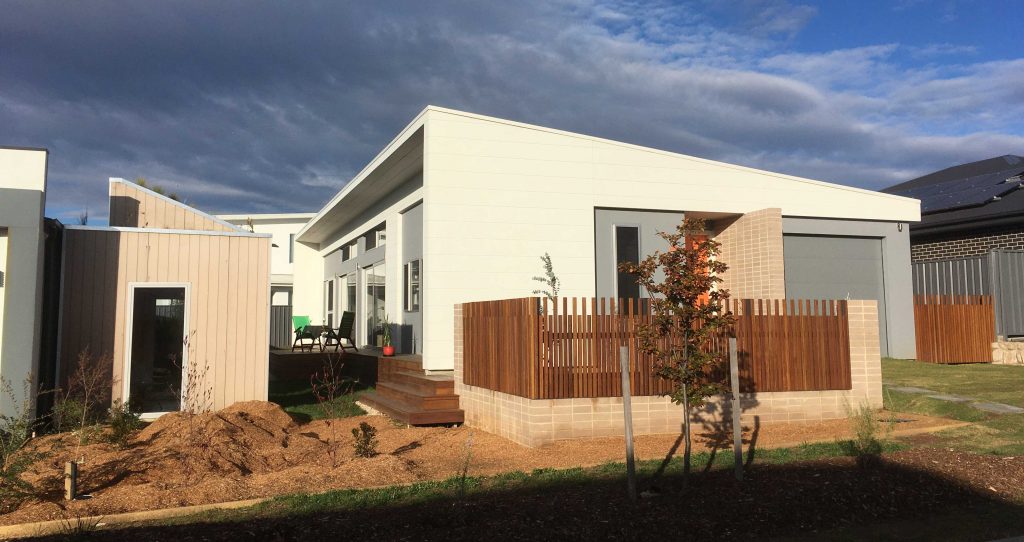
Note the cladding from Weathertex (made from 97% natural timber and 3% natural wax); light colours to reduce heat in summer; permeable surfaces (grass driveway, green roof, gardens) to reduce flooding and the urban heat island effect; Australian ‘spotted gum’ timber fencing; and Climate Wise and edible plantings in the front yard and naturestrip.
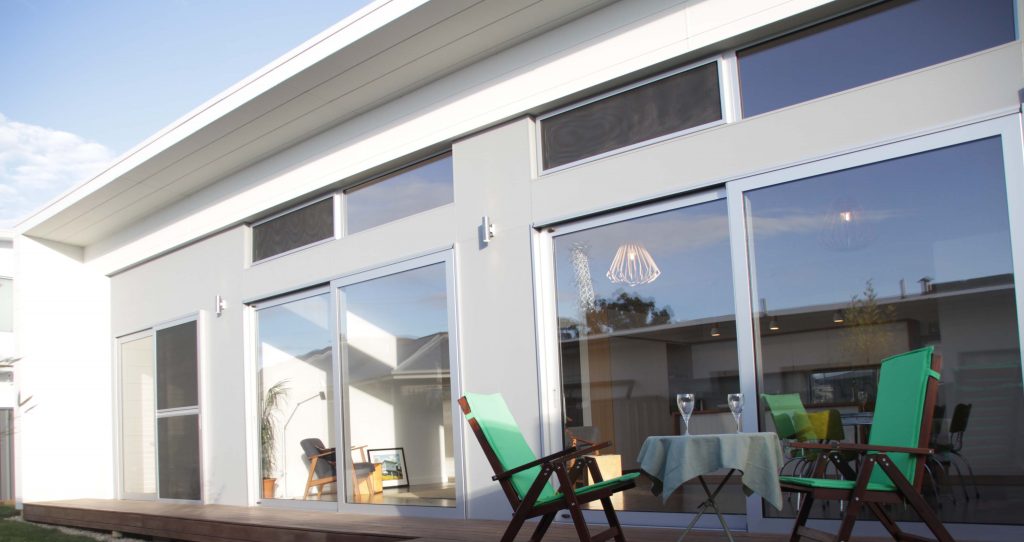
Note the large windows that capture the warm winter sun; the wide eave overhang for shading out the hot summer sun; and the Australian ‘spotted gum’ timber decking.
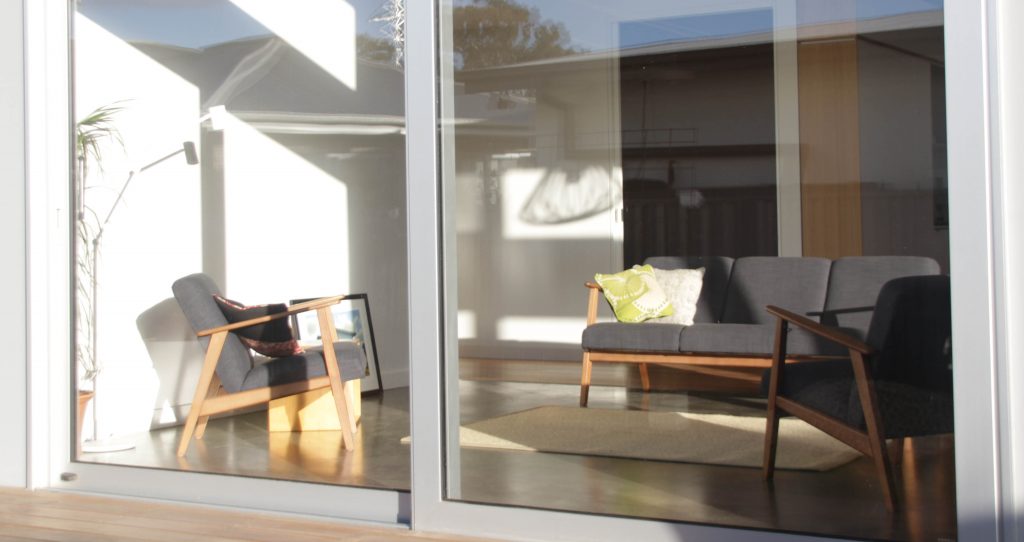
Note the double-glazed thermally broken aluminium windows; and the thermal mass concrete floor, which soaks up the warm winter sun to help heat the inside of the home and helps keep the home cool in summer when it is shaded by the large eave outside.
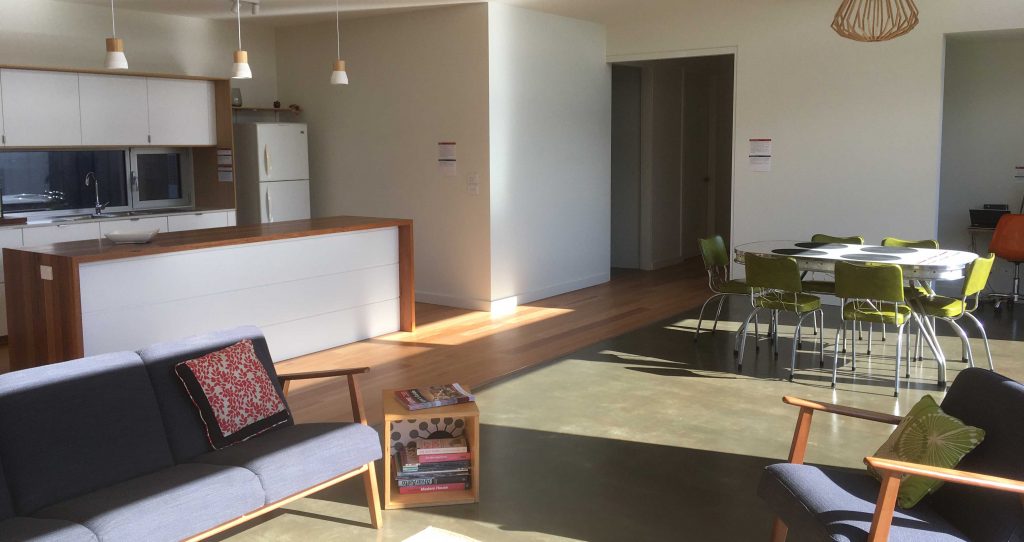
Note the burnished concrete floor with a natural linseed sealant from Livos, which soaks up the warm winter sun; the blackbutt timber floating floor from Choices Flooring Mitchell in the kitchen and hallway where thermal mass is not needed to soak up the heat from the sun; and the large cavity sliding door that separates the hallway from the living space to allow the home to be zoned for more efficient heating and cooling.
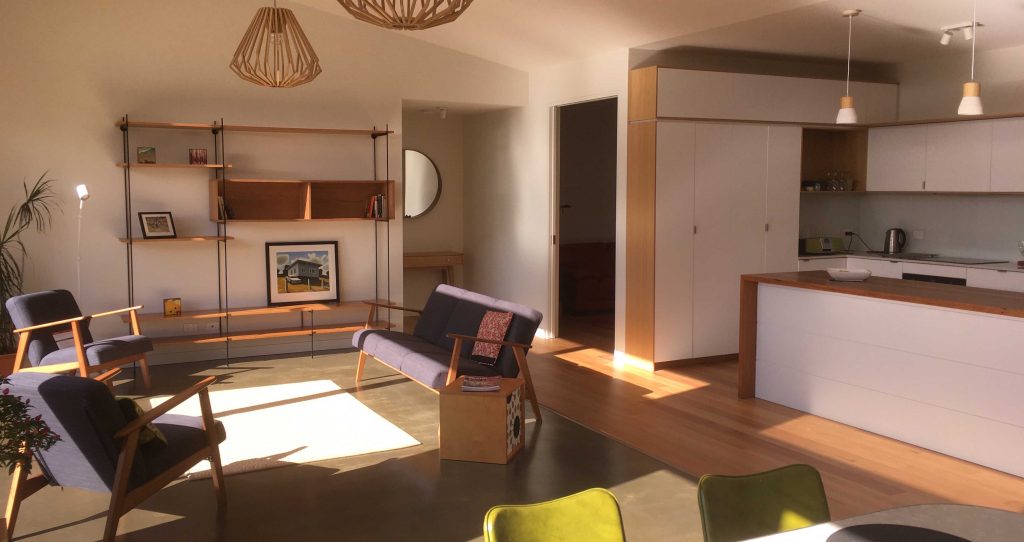
Note the natural north light streaming in; and the use of pendant lights instead of downlights, which reduces the holes, air movement and full insulation coverage in the ceiling; and the cavity sliding door between the living spaces and media room, which allows the spaces to be zoned for more efficient heating and cooling.
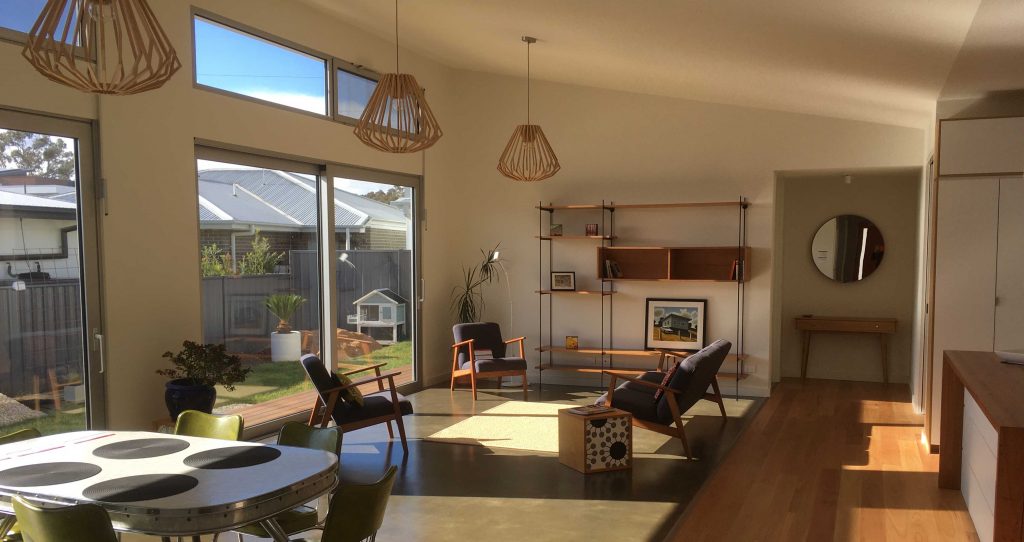
Note the natural north light streaming in; the use of concrete as thermal mass where the majority of sun strikes the floor and the use of a floating timber floor in the hallway and kitchen where much of the sun doesn’t hit; the set-down of the concrete floor along the line of the floating timber floor so that both are finished at the same level; and the connection to the outside, where the outside decking is the same level as the concrete floor and the windows are set down between them.
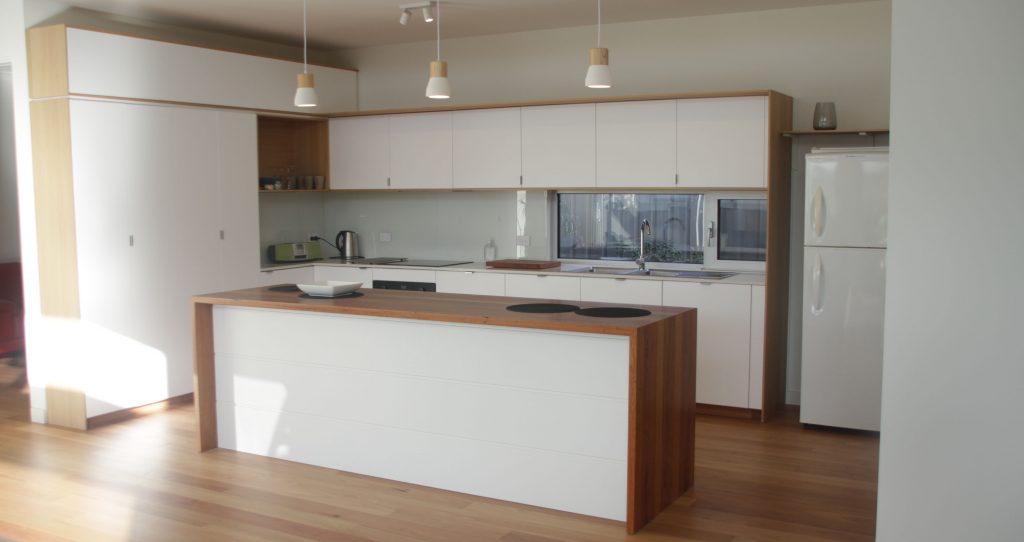
Note the big box retail kitchen, which reduced costs significantly to enable more funds to be available for energy efficiency features and uses a recycled PET plastic and waste timber in the chipboard of the cupboard doors.
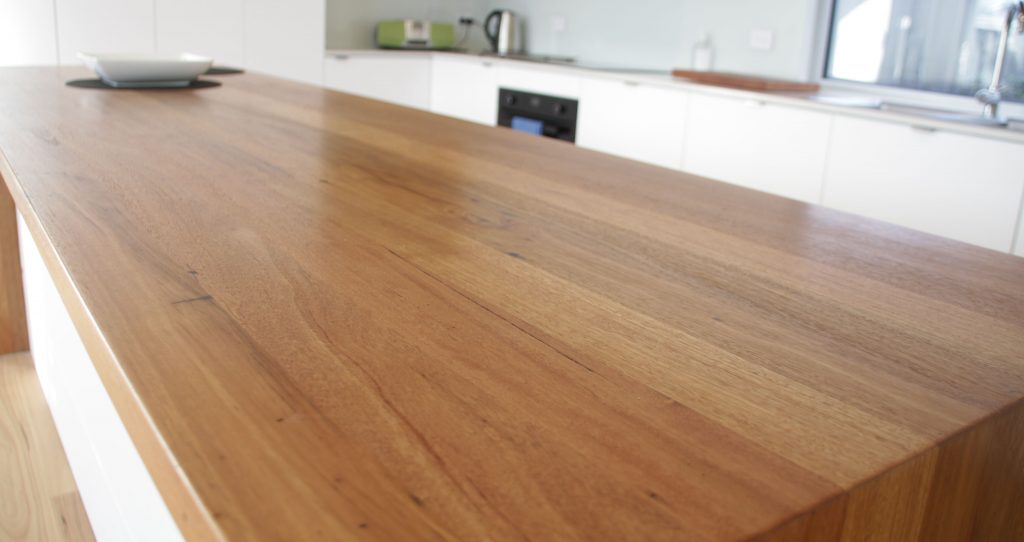
Note the recycled blackbutt timber benchtop from Thors Hammer; and the leftover Weathertex cladding on the front of the bench.
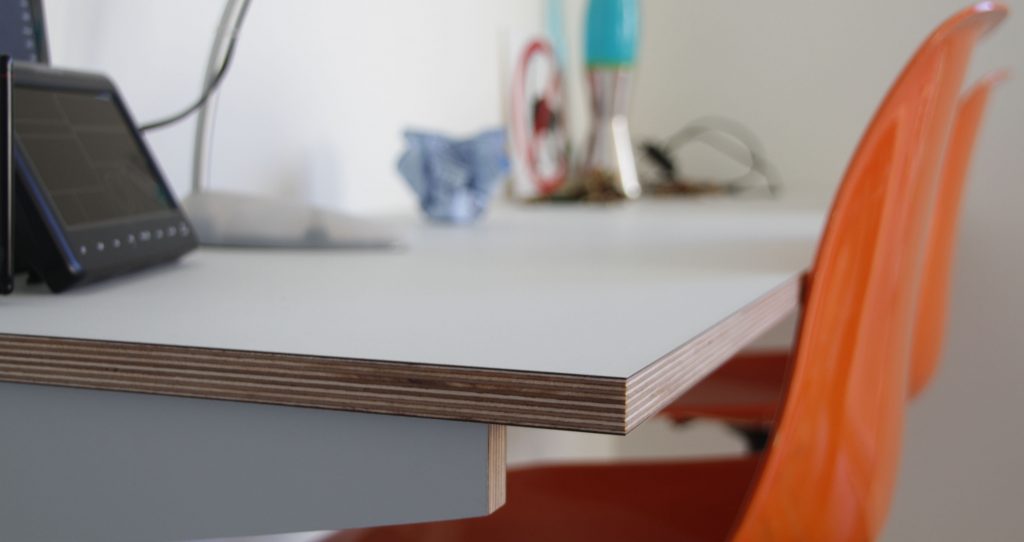
Note the Paperock board, which is layers of paper from renewable sources bonded with phenolic resin and heat/pressure cured on the top and bottom of plywood.
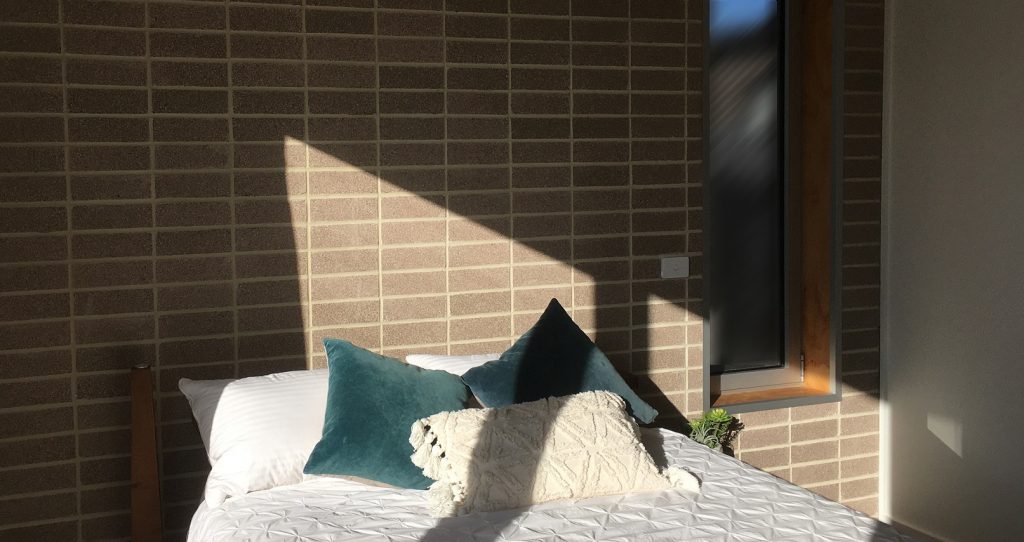
Note the reverse brick veneer wall (brick on the inside with the timber stud frame and insulation then cladding on the outside), which is another approach to getting thermal mass in a room besides a concrete floor. The thermal mass bricks soak up the warm sunshine during winter and cool the space in summer when the thermal mass is shaded.
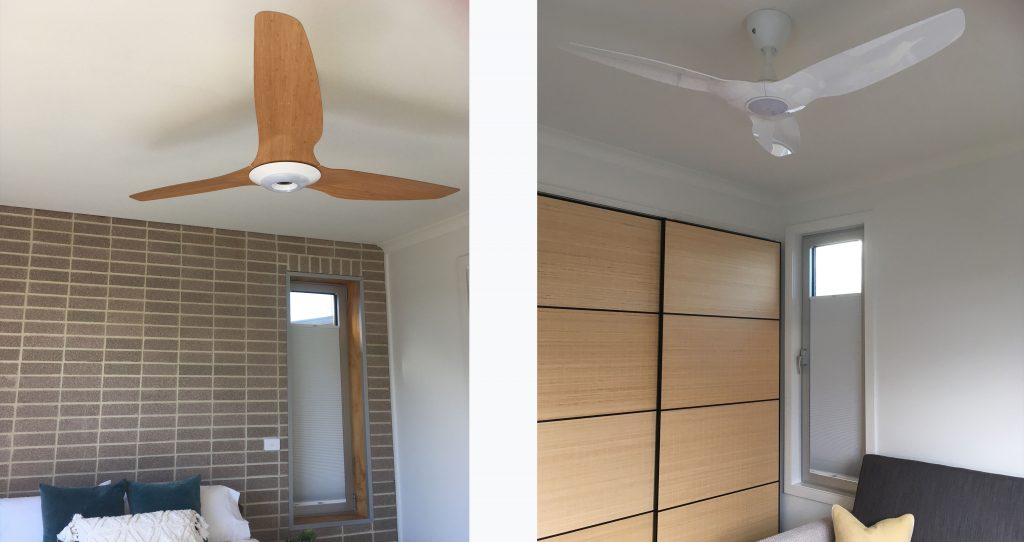
Note the ceiling fans from ‘Big Ass Fans’ were put in the master bedroom and bedroom that has a west facing wall, as it was considered these rooms would likely be the warmest on a hot summers night. These fans are quiet and energy efficient, with adjustable LED lights that meant a separate light for the room is not needed.
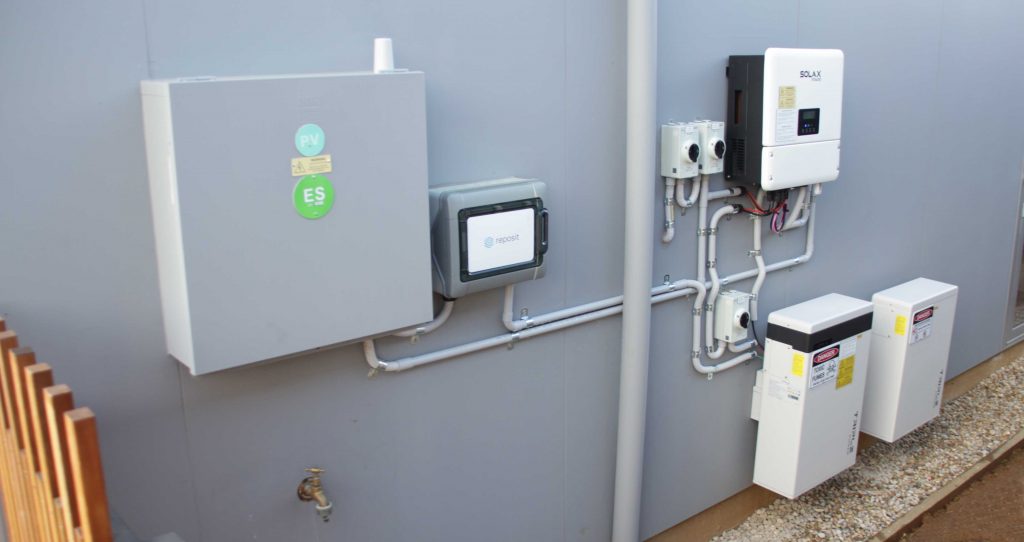
Note the 5kW inverter capturing power from the 6.6kW solar panels on the roof and the two 5.8kW batteries provided by Mondiaux Solar, and the Reposit box that provides real-time monitoring for the system onto a mobile phone app.
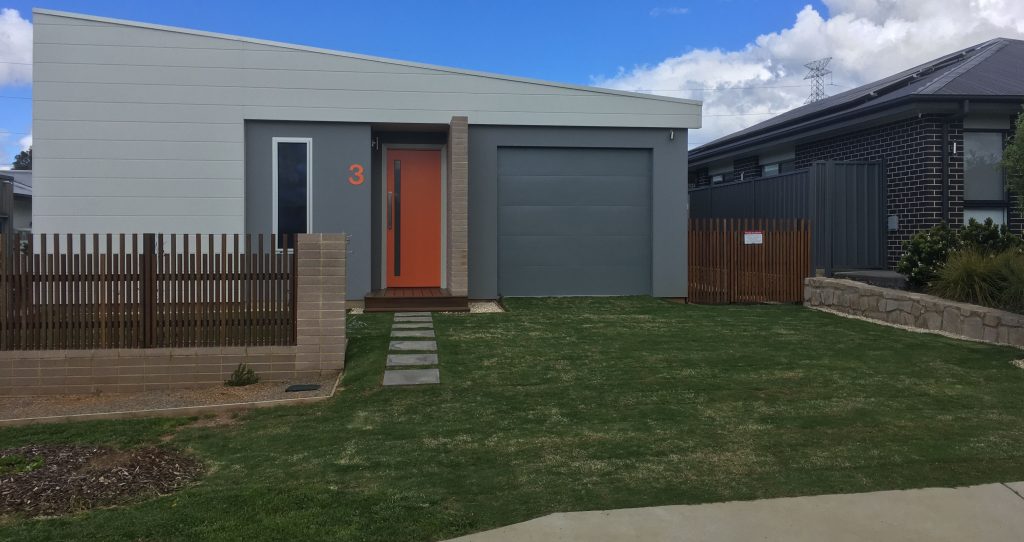
Note ‘Geohex’ recycled plastic grids were laid on top of compacted crushed rock, then filled with soil and covered by grass. The grid stabilises the ground and means cars drive on the grid rather than compact the soil and grass roots. This enables the grass to continue to grow even with substantial car traffic.
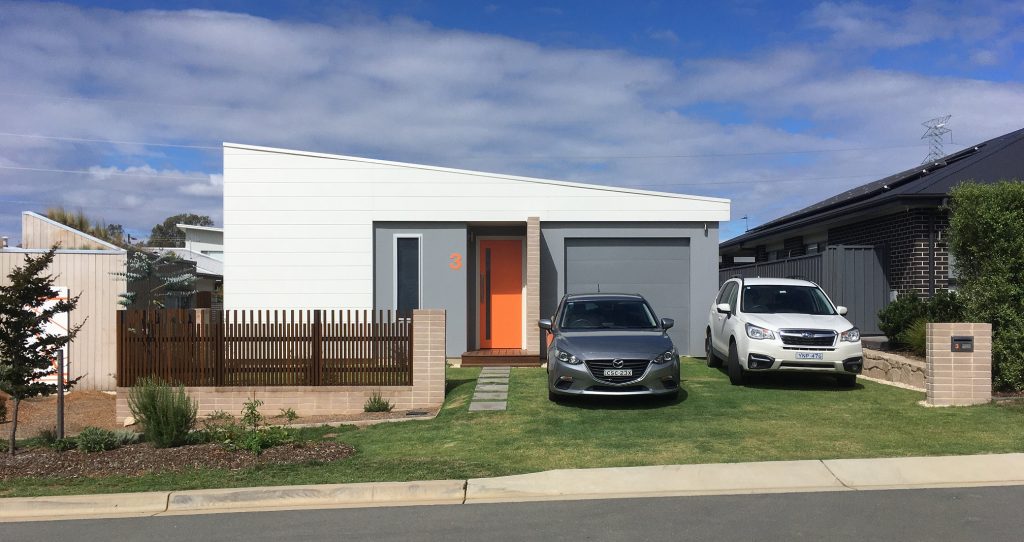
Note the grass has knitted together well and cars can comfortably park on the driveway.
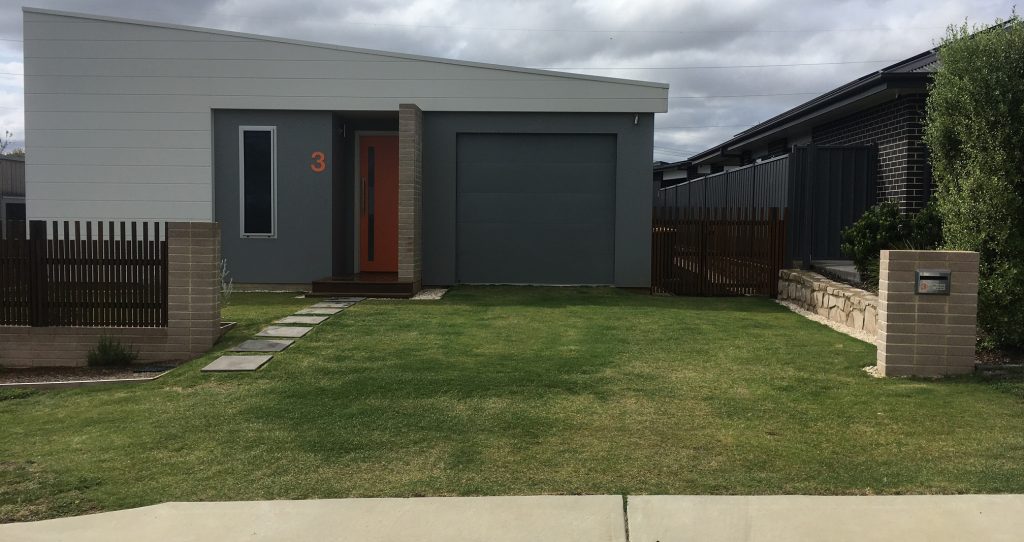
Note that even though at least one car has been driving and parking on the grass for 4 months, there are no visible wear marks. However, we did notice that where the car was parked on sunny summer days the grass underneath stayed greener than the exposed grass, so at times we did park the car in different locations to help the grass green up.
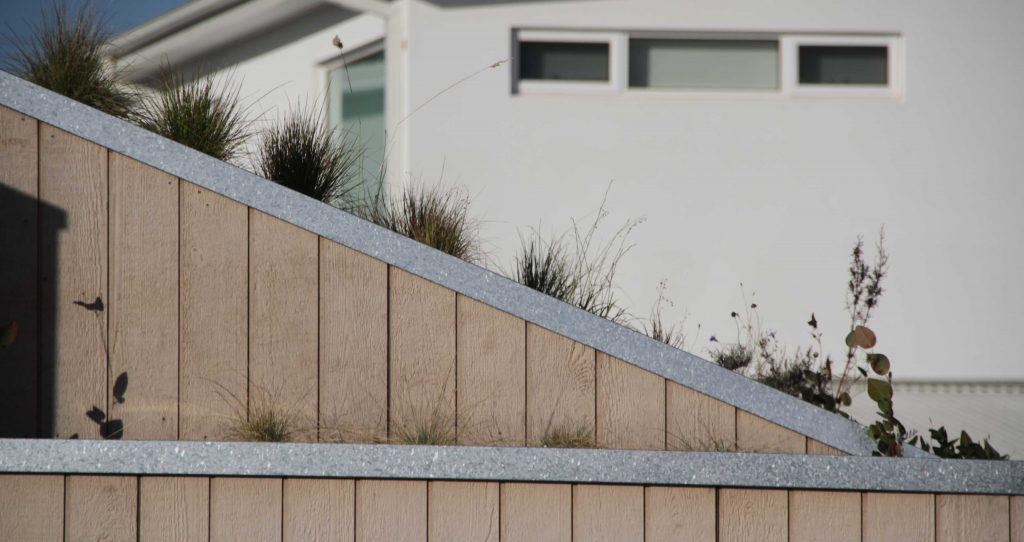
Note the native grasses and plants; and the part sloped and part flat roofs, which give different views to the garden and will test the differences in water retention.
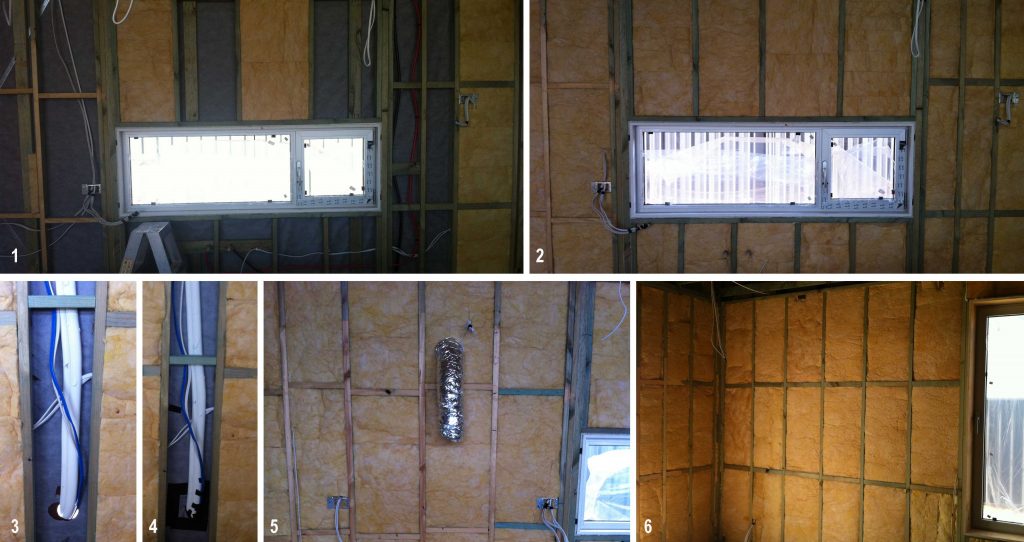
Note in image 1 the wires and pipes in the kitchen wall; and in image 2 the insulation that covers the wires and pipes in the kitchen wall. Image 3 shows the gap left in the wall wrap from the air-conditioning pipes; and in image 4 the air-conditioning pipes gap is sealed. Image 5 shows the insulated kitchen wall with good insulation around the exhaust duct. Image 6 shows a typical bedroom with insulation well installed with no gaps.
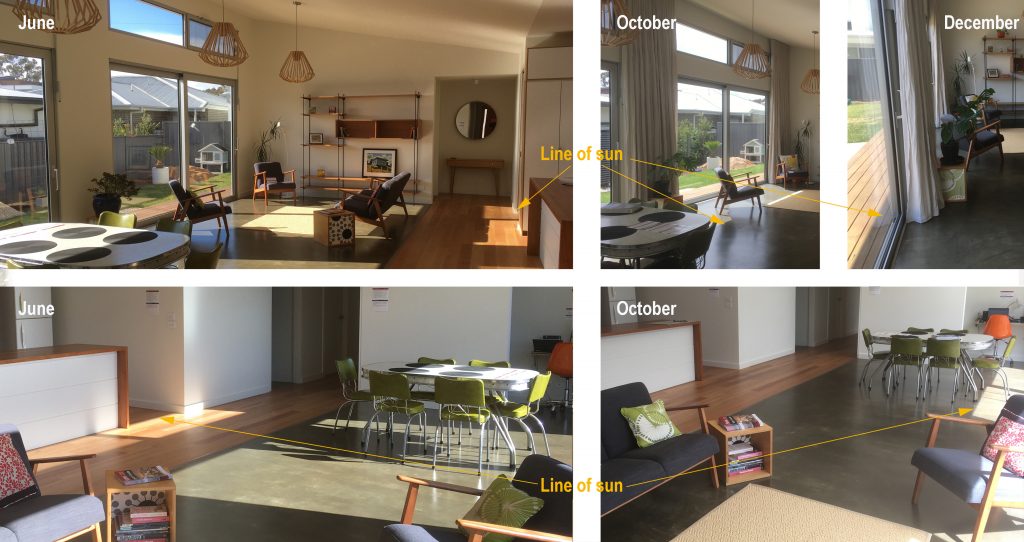
Note in June the sun came into the home all the way back to the island bench and all of the exposed concrete soaked up the sun, often making the room up to 27 degrees when it was 9 degrees outside. In October it’s only coming in as far as the end of the table. Whilst the outside temperatures are not quite getting as cold, we have noticed the temperatures inside are generally cooler, only reaching 23-25 degrees. In December the sun isn’t coming into the home at all.
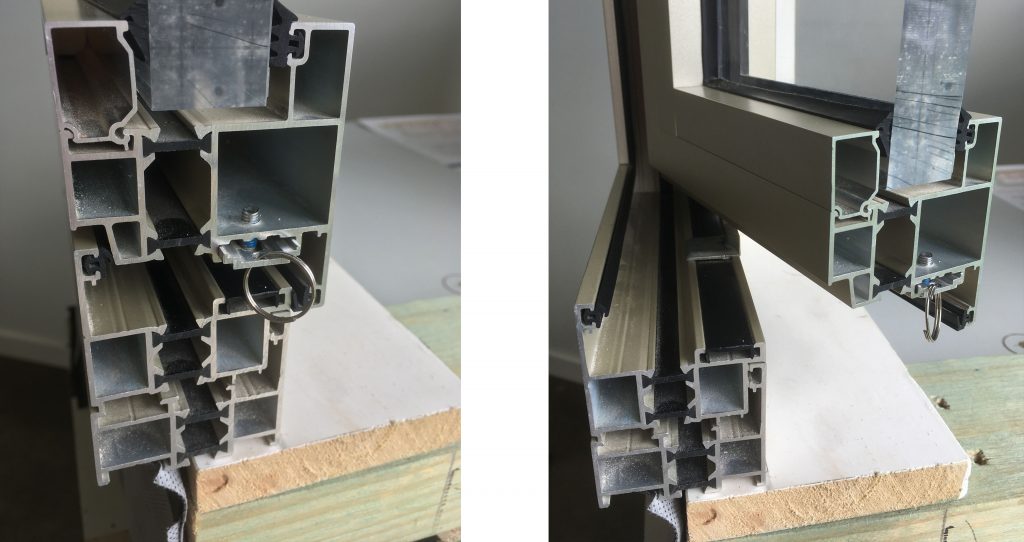
Note the black plastic thermal break that separates the outside metal frame from the inside metal frame. This break stops the cold or hot external temperature from conducting through the metal frame to the inside of the home and most importantly, stops condensation from forming on the inside metal frame.
